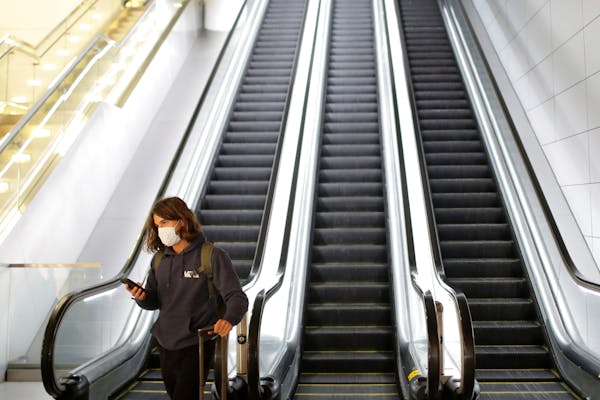Minnesota's public health lab will be able to test for the virus causing the global COVID-2019 outbreak by next week — using the same kit that had been deemed faulty earlier this month.
While local testing hasn't been urgently needed so far in Minnesota, where doctors have encountered only four patients whose illnesses and travels to Southeast Asia made them infection risks, state health officials said that the capability will be important if the novel coronavirus spreads in the U.S. as expected.
"We need to have the ability to assess additional people who may be infected but are not known to be at high risk," said Joanne Bartkus, director of the state public health lab. "This will enable us to figure out if the virus is spreading silently and to be able to isolate infected persons to help us prevent transmission."
Health officials in several states found problems with test kits they received this month from the U.S. Centers for Disease Control and Prevention (CDC). Two components of the kit appeared to work properly, but a third did not.
Further federal testing proved that the two functional components were enough to accurately determine whether someone was infected with the novel coronavirus, which emerged in Wuhan, China, in December and has spread worldwide since then, said the CDC's Dr. Nancy Messonnier.
"The third component … can be excluded from testing without affecting accuracy," she said Friday.
Delays in designing and validating the test have caused frustration in places where cases have already been detected or where officials believe testing is appropriate.
Until Thursday, only 15 cases had been detected by testing in the U.S. so far — and all but one involved people who had recently traveled to China or had close contact with those travelers, according to the latest CDC data. But that one case was troubling, because it involved a woman in northern California with no known contact with anyone who traveled to China — meaning that the virus could be spreading from person to person in the U.S. now. And then Friday, California officials reported a second such case and Oregon reported its own first case involving a teacher without any known risk factors.
"You don't know what you don't know unless you're testing," California Gov. Gavin Newsom said Thursday, adding that the few hundred testing kits in the state are "simply inadequate to do justice to the kind of testing that is required to address this issue head on."
Others have raised concerns that the CDC has been too slow to expand the definition of who should be tested. The federal standard for weeks was to test people with flu-like illnesses who had recently traveled to Wuhan or had close contact with such travelers.
China continues to report the most cases — the latest count being roughly 78,000 cases and nearly 2,700 deaths. However, the virus has now been detected in some 60 countries, according to the World Health Organization.
In reaction, the CDC on Thursday expanded its guidance for testing to include people who have unexplained severe respiratory symptoms and who have recently traveled to Iran, Italy, Japan or South Korea.
"It's long overdue that [testing criteria] be broadened," said Amesh Adalja, a senior scholar at the Johns Hopkins Center for Health Security. He added that "travel history will become less important as we have community spread in countries around the world."
One challenge is that testing is occurring amid the winter influenza season.
"Fever and bad cough are pretty broad parameters, especially during flu season," Messonnier said.
Those positive test results do not include the 47 Americans with COVID-19 who were repatriated into the U.S. after being infected at outbreak sites in Wuhan and aboard a Diamond Princess cruise in Southeast Asia.
All samples sent from Minnesota to the CDC have tested negative, including a fourth sample sent Monday.
Bartkus said Minnesota will conduct its own testing after she verifies the effectiveness of the original kit the state received and a new kit that contains only the two effective components.
Positive state tests will still be confirmed by the CDC. However, Messonnier said states will be able to declare "presumptive" cases and take action to isolate patients and prevent them from infecting others while awaiting the CDC's confirmation.
Health officials are concerned because this coronavirus is fairly infectious, and because no one is immune to it. Initial reports in China suggested a 2% fatality rate, which is far worse than the death rates in most flu seasons, but a study released Friday in the New England Journal of Medicine found deaths in 1.4% of infected people.
The Washington Post contributed to this report.

Minneapolis reaches $150k settlement with eyewitness of George Floyd's murder who claims experience gave him PTSD
He grew up legally in Minnesota, but immigration law gap may one day force student to leave

911 transcript gives more detail of Sen. Mitchell's alleged burglary

